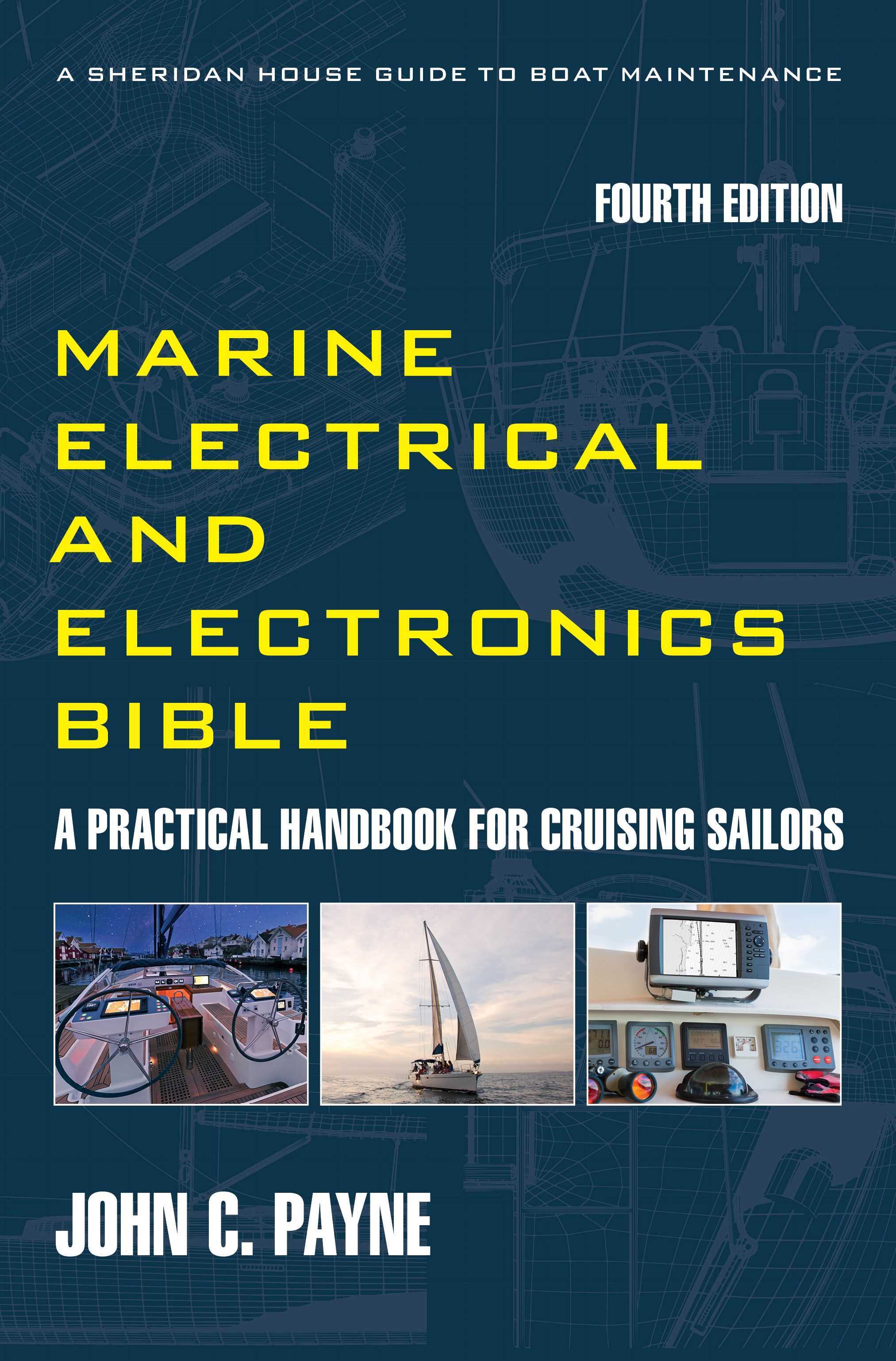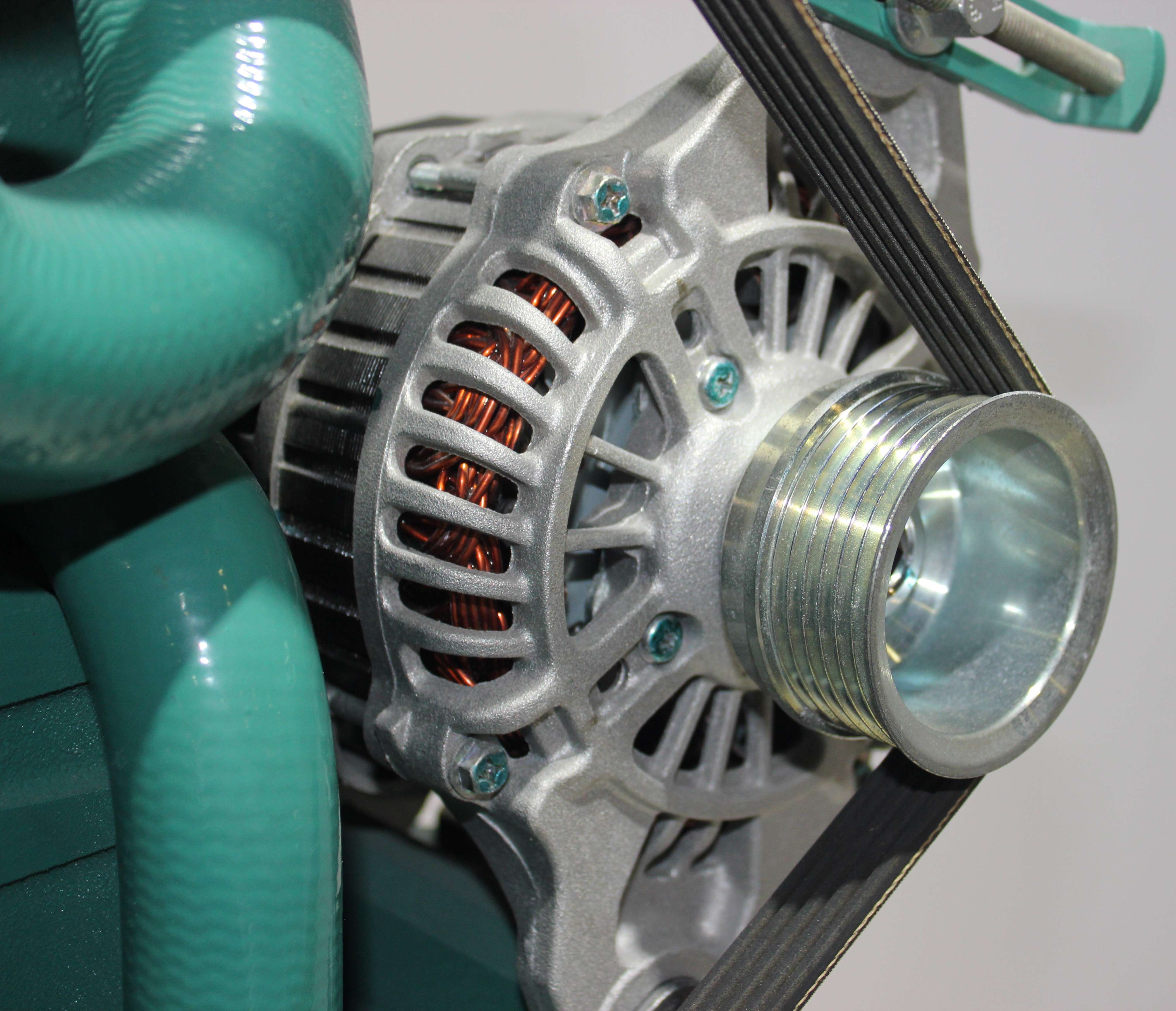How to
Charge Boat Batteries
How to charge boat batteries? Boat battery charging systems on everything from cruising yachts to power boats is the engine alternator and this is the electrical power house for most sailing yachts. There are a wide range of alternators available, from air cooled to even water cooled, and all are derived from various vehicle applications. In most cases you get what comes with your chosen marine engine and the designed service function of simply topping up the engine start battery.
The 4th Edition of the Marine Electrical Electronics Bible Get your copy and start becoming self sufficient and save money on expensive technician callouts.How to Charge Boat Batteries
Battery charging is covered in great detail in the Marine Electrical and Electronics Bible 4th Edition. On a boat battery charging system this is then required to change function from charging the start battery to that of charging large capacity and deeply discharged house battery banks. The vehicle alternators are designed around basic criteria that include the maximum current required not just to charge the start battery but to also supply electrical power to the vehicle systems. The alternator rotational speed range, is the operating speed of the engine, including the low idle speeds of many engines including slow traffic conditions. Alternators on vehicles also get much better cooling than a boat engine mounted unit.
This of course varies considerably to the service we want to subject the alternator to on a sailboat as part of the boat charging system. The criteria then are essentially charging large capacity deeply discharged battery banks in short time periods with relatively low engine speeds, where the engine changes from a propulsion source to just a boat DC generator charging source.
How to
Charge Boat Batteries
The alternator consists of a fixed three phase winding called the stator and the stator windings are formed onto a laminated core. The rotor is the rotating part of the alternator and the rotor shaft typically comprises 12 magnet poles, along with the excitation winding that terminates at each of the two sliprings. There is also a cooling fan at either one or both ends of the shaft, and the bearings that support and enable the rotor to turn. As the rotor turns the magnetic flux will flow through the pole body and across the air gap to the stator winding, and back across the air gap and opposite pole to complete the magnetic circuit.
During this rotation this field of force cuts though the three stator phase windings and every 360 degree rotation induces six sinusoidal waves within each phase. An excitation current is used to generate a magnetic field within the rotor so that required alternator voltage can be induced into the stator windings.
The excitation current flows through the exciter diodes; then through the brushes to the slip rings and to the excitation winding. The brushes are normally made of copper graphite and are spring-loaded to maintain correct slip-ring contact pressure. This goes to the field terminal of the boat alternator regulator and then to the negative terminal of the voltage regulator.
The circuit is completed as it goes back to the stator winding through the power diodes where it is then rectified to produce a DC output for battery charging though the full wave bridge rectifier
How to
Charge Boat Batteries
There are ways to improve the default arrangement of the average boat charging system that you get stuck with by the engine manufacturers. Visit this page to learn about upgrading your charging system and about improving charge system redundancy and how to analyze your system for weak points. These boat charging system principles I developed after years working within the offshore oil industry and applied them to cruising yachts. This is also extracted from a Pre-ARC Rally Seminar that I delivered some years ago. In tandem with this boat charging system, upgrade work which is linked to the engine starting system.
The 4th Edition of the Marine Electrical Electronics Bible Get your copy and start becoming self sufficient and save money on expensive technician callouts.How to
Charge Boat Batteries
There are variations in alternators and they tend to follow auto developments with a trend towards higher outputs for smaller package sizes and lower weights. There have been significant diode rectifier improvements also improved the cooling fan design and therefore greater efficiency and higher power outputs. Also they have improved heat transfer from the stators which also improves efficiency so that many modern vehicle alternators are often far superior to standardised units often installed in marine diesel engines and worth consideration when planning to upgrade. Marine alternators are ruggedized units that are over engineered and corrosion resistant. Companies such as Balmar and Mastervolt produce high output alternators.
One must also consider the engine speed because if you are trying to charge at low or idle speeds then the factor of pulley ratios is important. The alternator will only start to produce electrical power at a specific cut-in speed, and this is the ideal maximum alternator output at the lowest possible engine speed. The alternator has three speed levels that need to be considered as there is a direct relationship between the alternator output current, efficiency, torque, HP (kW) and the alternator speed.
Alternator manufacturers produce power output graphs and the ideal speed can be selected from these characteristics, so get hold of those for your specific alternator. The alternator speed ratings are called the Cut-in Speed when a voltage is generated; the Full Output Operating Speed when full rated output is available and the Maximum Output Speed for the alternator, after which destruction will occur. The trade-off is that if the pulley size is too small the alternator may over-speed and if too large the proper cut-in speeds may be wrong.
How to
Charge Boat Batteries
The other major way to charge boat batteries is by use of alternative energy sources. For many boats this involves solar panels and wind generators. The use of hydrogenerators is also an option for boats that need a lot of extra power when sailing and there are some good technology solutions to do this. How to charge boat batteries is a complex question and has many factors.

